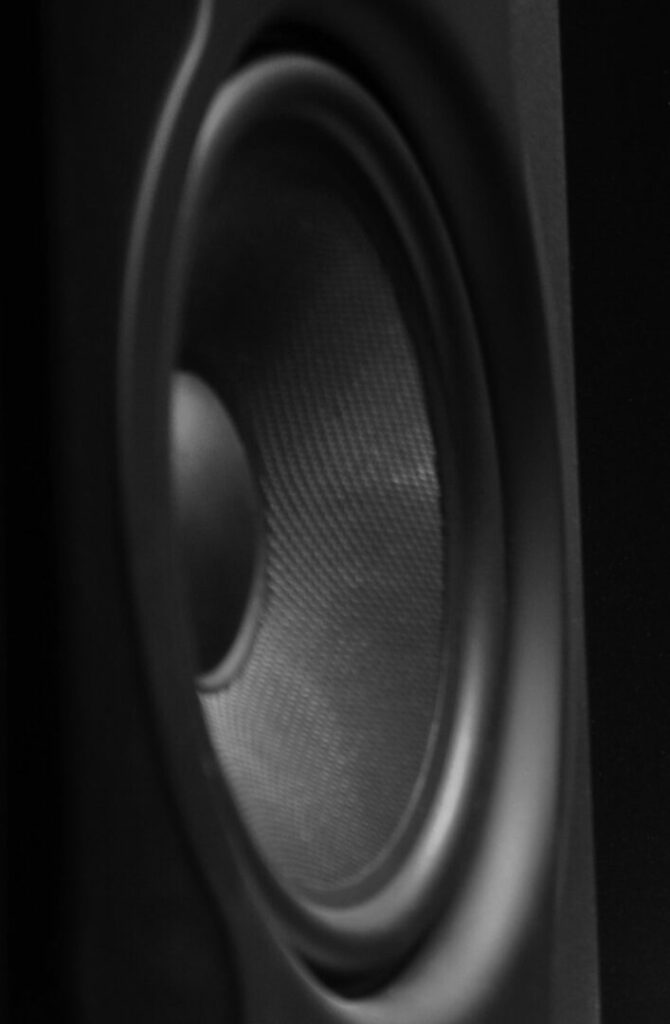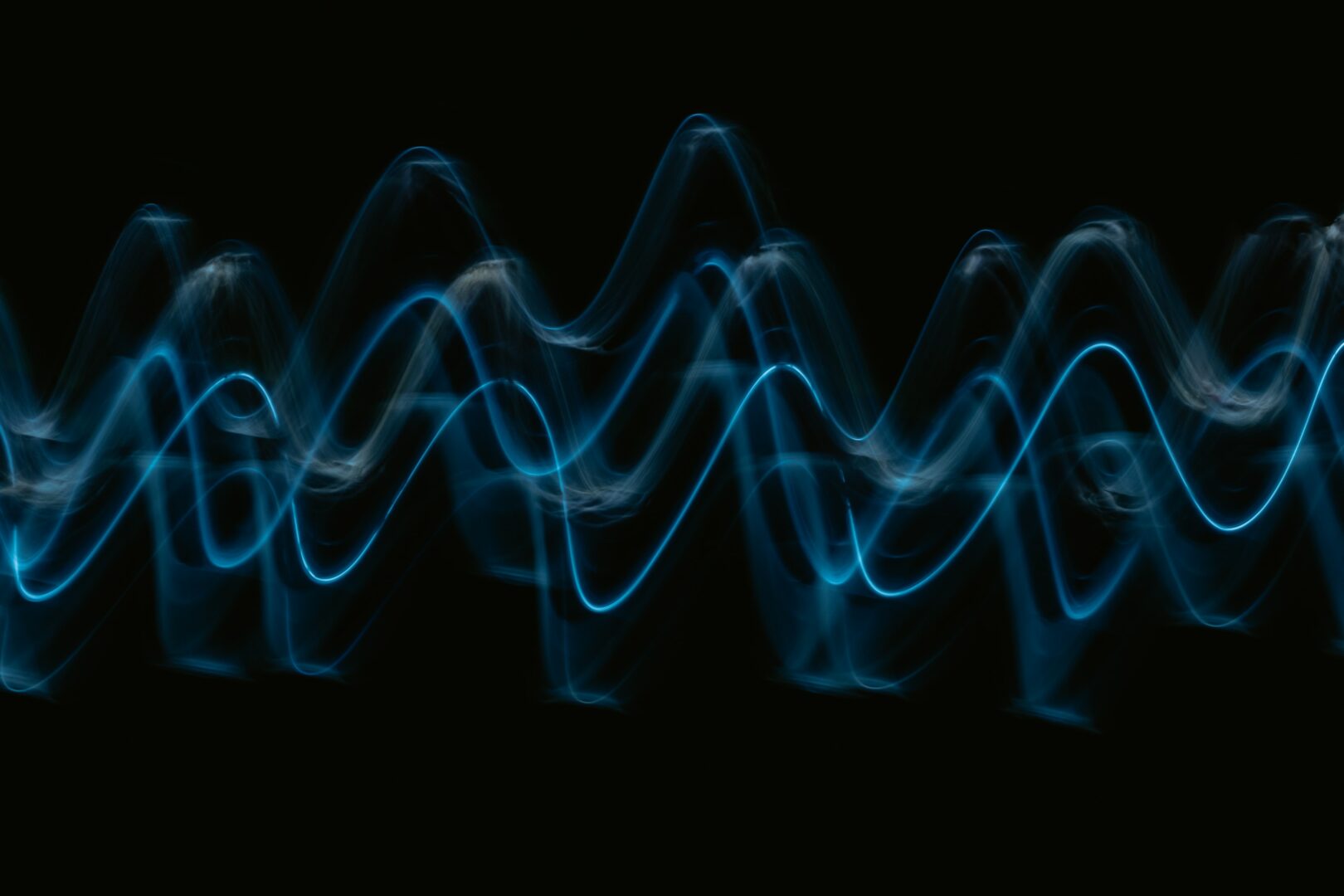Front Port & Rear Port Subwoofer Placement (Tips & Tricks)
Front Port & Rear Port Subwoofer Placement (Tips & Tricks)

For placement of rear ported subwoofers, I’ve often found that placing it one and a half times the width of the port away from the wall for the minimum distance tends to work best. Front ported subwoofers can be slightly closer, however to find the most optimal spot, doing the subwoofer crawl can reveal the best location for the sub.
I recently went over where to place your rear ported speakers for the best audio quality as well the difference between a front and surround speakers.
However what I didn’t go into detail about was the positioning of the subwoofer.
The reason for that is simple; bass frequencies are different both in the way they travel and how they interact in the room when compared with higher frequencies.
Similar to how positioning your speakers for bass output can be important, the positioning of your subwoofer is too.
So because of that, I wanted to do a separate article detailing how to specifically place your front or rear ported subwoofer for the cleanest bass quality — along with some tips you can also use to get the most out of your sub.
There’s a lot to get to so let’s just get right into it.
Understanding How Bass Travels

So to get an idea of where the best place is to place your subwoofer, it’s first important to remember how a subwoofer’s bass actually works.
Without making it too complicated since it can get complex really quickly, bass waves are omnidirectional meaning they travel in every direction and contain much more energy than higher frequency waves.
It’s the reason why even when sitting close to a subwoofer, it seems like the bass isn’t coming from any one particular direction.
They also travel much slower and interact with whatever is in the room to a greater degree — passing through different materials, reflecting off others and so on.
Being that these waves are longer than higher frequency sounds, even a slight movement of a subwoofer can have a dramatic influence on the bass you experience.
So with this in mind, you can use that to get a better quality bass through proper placement.
But how do you do that exactly?
A few ways actually that we’ll go over — but it’s important to remember that the type of subwoofer you have will affect this to some degree.
What Is A Front Ported & Rear Ported Subwoofer?
There’s 4 types of subwoofers, front ported, rear ported, down firing, and sealed.
A front ported subwoofer means the port is on the front, and is also called a front firing subwoofer since the driver is also typically located on the front.
A rear ported subwoofer has a port that, like you’ve probably guessed, is on the back.
Downfiring subwoofers have their drivers on the bottom and emanate their bass downwards through the floor.
A sealed subwoofer doesn’t have any ports and is just one solid enclosure.
The reason I’m reiterating the types of subwoofer is because it’s these ports that will directly influence the best place to actually place them.
The location of the port matters since it’ll give you an idea how far or close to a wall a subwoofer should be.
Of course there’s many other factors that impact bass quality, but this is one that’s definitely important.
Where Should I Place A Rear Ported Subwoofer?
Keeping all of this in mind then, how far should a rear ported subwoofer be from the wall?
For rear ported subwoofers, I’ve found the minimum it should be placed from a wall is the width of the port itself plus half the width.
So if the port is 3 inches for example, then the minimum in that instance would be about 4.5 inches from the wall.
This of course can and likely very well might vary, but from my experience, I’ve just found this to be a good starting point with finding the right spot for this kind of subwoofer.
Placing it closer than this can sometimes be detrimental to your bass quality as it can basically cause unwanted reverberation in the wall.
Not to mention it can cause your bass to sound boomy and lack articulation which defeats the purpose (though it depends since this might not always be the case)
Now as for the ideal spot, that’s going to be different for every room.
However what you can do to find this spot is using the subwoofer crawl.
I’ve covered this in much more detail before but basically to do the subwoofer crawl, place the subwoofer at your listening position and play content that has a lot of bass.
Then go around the room and find the spot where it sounds best.
Mark that spot and place the subwoofer there.
Here’s a guide that goes into much more depth with that process.
The Subwoofer Crawl
Where Should I Place A Front Ported Subwoofer?
Luckily, the process for placing a front ported subwoofer is basically the same as a rear ported one, the only difference is you might be able to place it closer to a wall without distortion or port noise.
But other than that there’s really not much of a difference.
Just remember to not place it in an entertainment center or something like that since it can be bad for both the sub and your bass quality.
Should The Subwoofer Be Between The Front Speakers?
What about the subwoofer’s position in relation to the other speakers, should it be placed between the front speakers?
It can be placed there, but the subwoofer crawl will be the best way to find out what the ideal spot for the unit is.
The ideal spot very well could be between those speakers, or it could be a corner or even somewhere else.
It’ll likely be different for each room so test to see what gives the best bass response.
How To Improve The Bass Of Your Subwoofer
Using Corners For Room Gain
That being said, there’s still ways to improve your bass even after you’ve found the best spot for your sub.
One way is through using corners.
If you place your subwoofer in the corner you’ll likely notice the almost immediate increase in SPL (sound pressure level) which can make it sound better, or it might do the opposite and make it sound muddled.
However you can still further tweak this sound for better bass quality by moving the sub forward from the corner a little bit and playing your content then keeping in mind what I mentioned earlier.
What you might notice is it’ll peak and drop in volume even from slightly moving it along the wall.
Once you find the spot where the bass is strongest without losing that detail, that’s where the sub should remain.
Adjusting The Trim In The Receiver Menu
Another way you could increase the amount of bass is by literally increasing the amount of bass.
After you’ve calibrated your speakers, if you notice the subwoofer’s levels still seem low, you can increase it in the receiver settings.
This is what’s known as running the sub hot though increasing it too much might make the LFE seem overpowering.
At most I’d say 6 decibels is what it should be increased by in the menu before it starts to become too unbalanced though it depends too.
Implementing Acoustic Treatment
Do you happen to notice holes in the bass output in certain spots around the room?
There could be nulls present.
Nulls to put it simply are when 2 sound waves collide which then cancel each other out.
This can lead to an area or even areas where there happens to be a steep decrease in volume.
You might also be experiencing the opposite with dramatic increases in volume known as peaks.
It could even be a combination of the two.
With that said, acoustically treating the room by way of bass traps, & sound panels may potentially help with the audio characteristics in a room.
Using 2 Subwoofers
Finally, for an improvement in bass, there’s always the option of using 2 subwoofers rather than one.
When properly setup, 2 subwoofers can give a much smoother and impactful bass, and can help reduce any peaks or nulls present.
https://easyhometheater.net/setting-up-2-subwoofers
Final Thoughts
With that, hopefully you now have a better understanding on where to place your subwoofer so that you get the most out of its capabilites.
A rear ported subwoofer and front ported subwoofer are both relatively similar in how they function; the actual differentiator between the different types are things like power, materials, driver size, etc.
Correct placement can have the biggest impact on the bass you experience, and with proper adjustment, can make for a very fun experience overall.
For ideas on subwoofers that might be worth considering, this article may help.
https://easyhometheater.net/the-best-home-theater-subwoofers
That’s all for now though.
Until next time.
Make it easy, keep it simple!
About Me







Leave a Reply